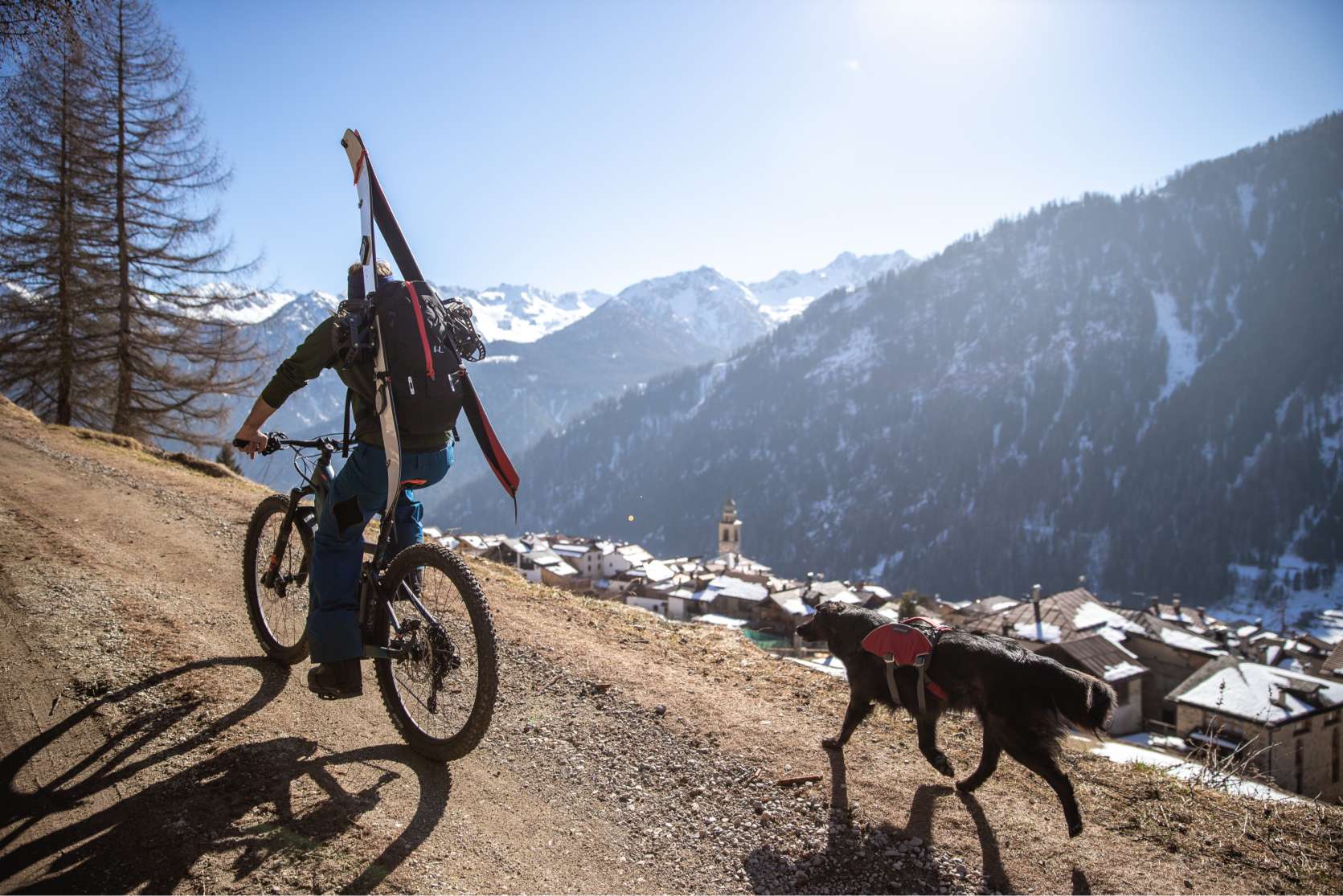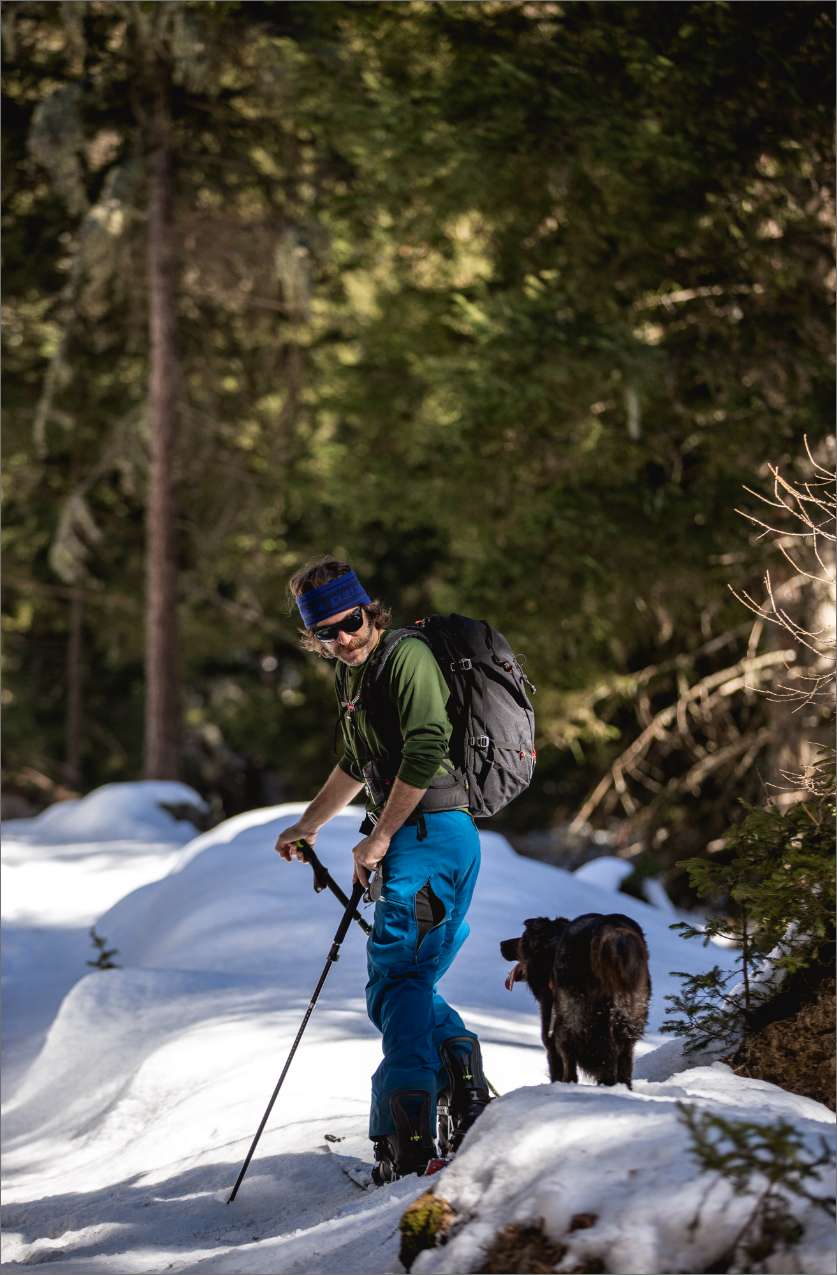Exploiting natural resources less than - or at least equally to - the speed at which they regenerate:
How can we do that?
Luca Albrisi defines himself as an alpine nomad; he is someone who is deeply passionate about outdoor activities - exploration snowboard in particular - and who believes strongly in sharing his love with others, to help the world become more aware of the nature around us.
Can we talk about a sort of outdoor philosophy?
Of course we can, but like everything in life, there are different philosophies that sometimes clash with each other.
Keeping this in mind, we can definitely say that there is no single outdoor philosophy, where by outdoor we mean not just sports but our whole relationship with nature. Indeed, there are various ways to see and “understand” the outdoors, mainly based on the different ideas on what the relationship between man and nature should be. It is on the basis of such ideas that balances and visions differ.
Can we say that outdoor philosophy and environmental conscience support and feed into each other, creating a special relationship between man and nature?
Unfortunately, no - it’s not s easy as that.
As I was saying before, there are different outdoor philosophies that have different ideas about what the relationship between man and nature should be. This means there are different ideas about what you should do in nature. For example, often we are influenced by an “economic boom”-type culture, which means we see nature as something to exploit, an economic resource, and not as something of intrinsic value.
This can be linked to an anthropocentric vision of the world that sees man exploiting other forms of life (animals and plants) rather than coexisting with them. When this happens, it shows that we have broken off from what we really are - part of nature - forgetting our biological and cultural roots.
Going back to the outdoors means retracing our steps, trying to recreate our relationship with nature and closing that gap that we have created.
I think that this vision of us as part of the natural world if the real outdoor philosophy at the base of a true balance between use and respect of the natural world.
In this sense, yes, life outdoors can be a way to nurture an environmental conscience.

In your documentary The Clean Approach - https://vimeo.com/337229074 - you say that understanding and approaching sustainability is a different path for each of us, but that the best, most important moment is when we can truly connect with the natural and animal world because it is only then that man can identify with nature and relive his original relationship with it.
Do you want to tell us about a special moment in your journey?
Actually, there have been many episodes like that: every time I was alone in open spaces with my snowboard, or the times I got “lost” in the woods behind my house following deer calls.
Still, I think that the link between all these experiences is my attempt at living them critically, shrinking my human essence and instead trying to attune myself to what surrounded me.
Indeed, I believe that connecting with the world around us, really feeling part of the outdoors, is something that cannot really be described, and a way to enrich our existence.
That’s why I think that experiencing the outdoors is an important piece of the puzzle to reach awareness, to find ourselves and our balance in the world.
This is the inspiration behind The Clean Outdoor Manifesto (www.theoutdoormanifesto.org), a project that aims to develop a sustainable outdoor culture by engineering a grassroots change in the world.
When did your personal journey turn into a collective project?
I have always tried to live my life and my habits according to this philosophy and I think we all need to do that.
Then there comes a moment in which we realize that, if we want to make a change in the world, we need to join forces with others that have our same objectives; we need to start creating our own reality.
It’s with that in mind that The Outdoor Manifesto was born, that is to spread the message of how we can tip the balance within the outdoor community, suggesting a grassroots change that really comes from within.
What are the goals of The Clean Outdoor Manifesto?
The first step was to share our vision and send out a call to action to those who recognize themselves in our Manifesto. The idea was to create a first, critical, community within the outdoor world.
The next steps - that actually started a while ago - are to bring our group towards practical, concrete actions that can bring attention to various environmental issues.
This means trying to influence the outdoor world as a whole: on the one hand there is the choice to develop areas where we practice outdoor sports like tourist areas and natural parks, on the other there is the pressure we want to put on those companies producing outdoor equipment to be more sustainable, and to be in line with these actions.
Have you already taken concrete steps?
Some of the activities we had planned had to be put on the back burner due to Covid-19. We still managed to be a partner of the Lago Santo 24h Run for the protection of the Santo Lake in Cembra (Cembra Valley). At the moment we are working in various conservation projects to protect mountain areas such as Marmolada and Lagorai, threatened by “land enhancement” projects. However, we are also still continuing our work of sharing information and visions, networking with people and associations that share the principles of our Manifesto.
To find out more or experience some of the Stories by #THEOUTDOORMANIFESTO:

Images Credits:
© Matteo Pavana
© Alice Russolo
Exploiting natural resources less than - or at least equally to - the speed at which they regenerate:
How can we do that?
The paradox of biodiversity: maintaining stability while encouraging dynamic evolution. But what if men did the same?
